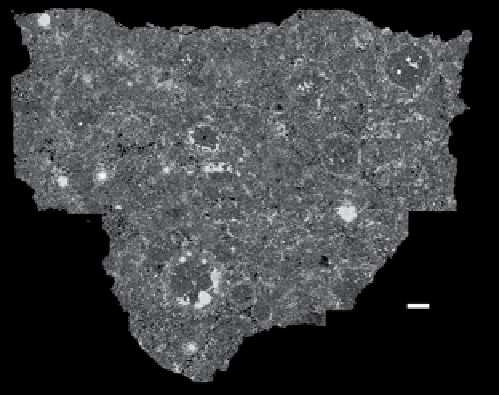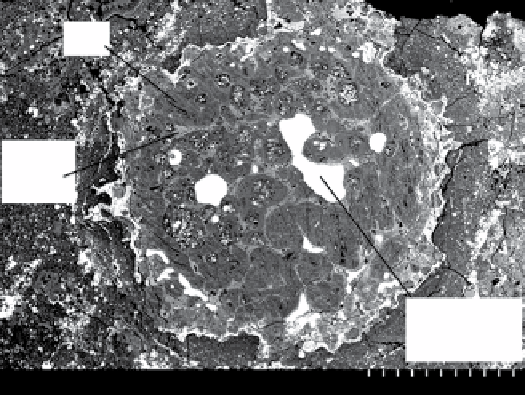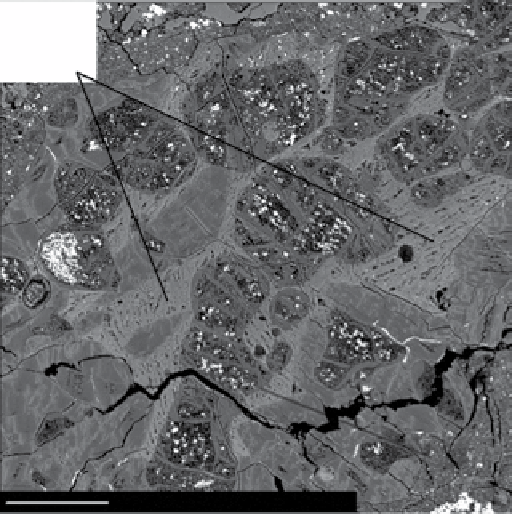Geology Reference
In-Depth Information
(a)
(b)
Phy
Al-rich
Phy
Phy
Phy
500
μ
m
FeNi, Mag,
FeNiS
GRO 95577,11
(c)
Al-rich
Phy
Phy
Phy
Figure 4.2.
(a) Fe Kα x-ray image of a polished thin section of GRO 95577, 11 showing large chondrules up to 1.8 mm in size.
The silicates in all the chondrules have been altered to phyllosilicates. The bright white areas are Fe-Ni metal grains, most of which
have been altered to magnetite. (b) A chondrule from GRO 95577, 11 (1 mm across) with a porphyritic texture in which the pheno-
crysts and mesostasis has been completely replaced by phyllosilicates (Phy). The metal (white) has been partially replaced by mag-
netite (Mag). (c) Enlargement of the interior of the chondrule in (b) showing the phenocrysts replaced by phyllosilicates and the
chondrule mesostasis replaced by an Al-rich phyllosilicate. Source:
Weisberg and Huber
[2007].
MIL 090657, QUE 99177 and MET 00426; Plates 25 to
27), and much of our knowledge of the CR group is based
on the study of these samples. However, GRO 95577
(Figure 4.2a) is important as the first CR known to be
completely hydrated and is considered a CR1 [
Weisberg
and Huber
, 2007]. It is a remarkable meteorite in that the
chondrules are completely hydrated, consisting almost
entirely of phyllosilicates, magnetite, and sulfides.
Although GRO 95577 is completely altered, the initial
chondrule textures are preserved, showing perfect pseu-
domorphic replacement (Figure 4.2b, c) [
Weisberg and
Huber
, 2007]. The chondrules are in sharp contact with
the matrix, their fine-grained rims are clearly visible, and
the boundaries of the dark inclusions can be easily



